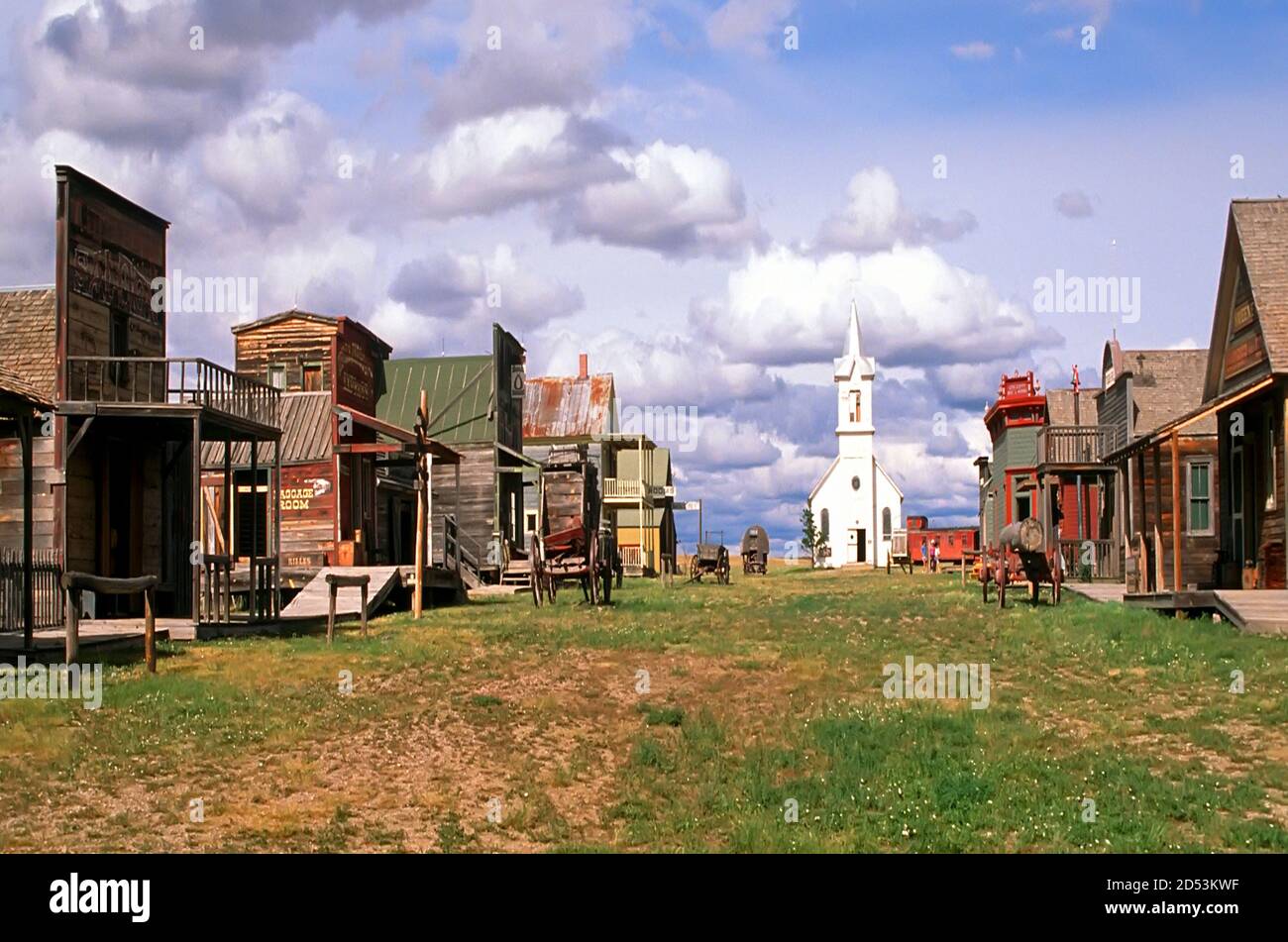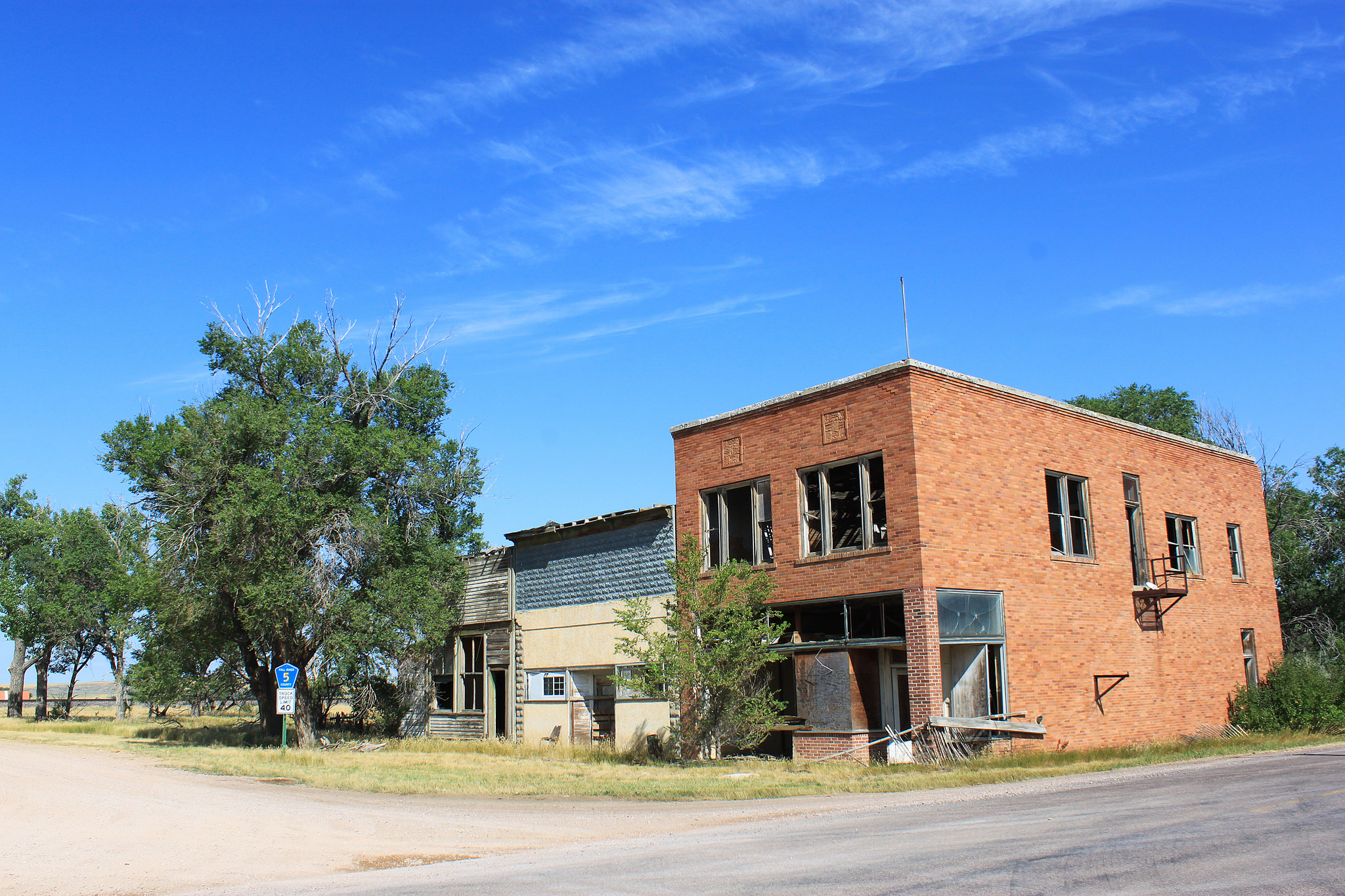
Echoes in the Dust: Exploring South Dakota’s Ghost Towns
The wind, a constant, unseen sculptor of the American West, whispers through skeletal timbers and across vast, empty prairies in South Dakota. It hums a dirge for forgotten dreams, for the ambition and desperation that once pulsed through towns now reduced to little more than echoes. These are South Dakota’s ghost towns – silent sentinels of a bygone era, each crumbling facade and overgrown foundation a testament to the relentless march of time and the fickle fortunes of the frontier.
From the rugged, gold-strewn hills of the Black Hills to the boundless expanse of the prairie, these abandoned settlements dot the landscape like a scattering of historical breadcrumbs. They tell a story not just of boom and bust, but of human resilience, the allure of quick riches, the harsh realities of nature, and the ultimate impermanence of even the most fervent endeavors. To explore them is to step back into a raw, unfiltered chapter of American history, where the promise of a new life often clashed with the unforgiving realities of the land.
The Allure of Gold: Black Hills Boomtowns

The most famous catalysts for South Dakota’s ghost towns were the shimmering veins of gold discovered in the Black Hills in the mid-1870s. The news sparked a frantic rush, drawing prospectors, entrepreneurs, and opportunists from across the nation. Towns sprang up overnight, their names often reflecting their aspirations or the geology that spawned them: Rockerville, Silver City, Galena, Spokane, Rochford, Mystic.
Rockerville, for instance, was one of the earliest and most vibrant. Founded in 1876, it became a hub for placer mining, where prospectors sifted gold from stream beds. At its peak, it boasted a population of over a thousand, with saloons, stores, and even a newspaper. Yet, as the easily accessible gold diminished, so did Rockerville’s fortunes. Today, little remains but foundations, a few scattered artifacts, and the enduring quiet of the forest. The boom was swift, and the bust even swifter, a common narrative for these mining camps.
"The Black Hills gold rush was a fever, and these towns were its temporary symptoms," explains Dr. Eleanor Vance, a historian specializing in the American West. "People poured their entire lives into these places, betting everything on a strike. When the gold ran out, or a better claim was found elsewhere, they simply picked up and left, often abandoning everything they couldn’t carry."
Rochford, nestled deep in the northern Black Hills, offers a more tangible glimpse into this past. Though not entirely abandoned, with a few year-round residents and a popular lodge, its historical core speaks volumes. Once a bustling supply town for surrounding mines and logging operations, Rochford had a post office, general store, and multiple saloons. Its enduring structures, though weathered, allow visitors to visualize its heyday. The nearby remnants of other camps like Custer Peak City serve as stark reminders of how close Rochford came to complete desolation.
Spokane, located south of Keystone, is another fascinating example. It wasn’t gold, but mica – a heat-resistant mineral crucial for early electronics – that gave birth to Spokane in the late 1880s. The Spokane Mica Mine became a significant operation, supporting a small company town complete with a store, boarding house, and a few homes. The mine operated on and off for decades, but by the mid-20th century, cheaper alternatives and changing market demands led to its closure. Today, the mine’s eerie, gaping shaft and the skeletal remains of buildings stand as a monument to specialized resource extraction and its inevitable decline.
The Prairie’s Empty Promises: Homesteading and Railroad Towns
Beyond the rugged Black Hills, the vast plains of South Dakota also bear the scars of forgotten communities. Here, the forces at play were different: the promise of fertile land, the expansion of the railroad, and the ambition of homesteaders. The Homestead Act of 1862 offered 160 acres of land to anyone willing to settle and improve it, leading to a massive influx of settlers in the late 19th and early 20th centuries.
Hundreds of small towns sprang up along newly laid railroad lines, serving as vital service centers for the surrounding agricultural communities. They were often named by railroad companies or ambitious land developers: Fairburn, Okaton, Wasta, Farmingdale. These towns boasted grain elevators, general stores, schools, churches, and often a single, bustling main street. They were the social and economic heartbeats of isolated farming families.

However, the prairie towns faced their own set of challenges. The harsh South Dakota climate, with its brutal winters and scorching, drought-prone summers, made farming a precarious venture. The Dust Bowl years of the 1930s delivered a devastating blow, forcing many families off their land and into an exodus.
Moreover, the very railroads that gave them life often sealed their fate. As rail lines consolidated and transportation improved, some towns found themselves bypassed or no longer essential. The advent of the automobile meant farmers could travel further to larger towns for supplies and services, rendering the smaller, local centers obsolete. Mechanization in agriculture also reduced the need for large farm labor forces, further shrinking rural populations.
"These prairie towns were built on hope and the sweat of homesteaders," says local historian Samuel "Sandy" McPherson, who has documented many of the state’s forgotten settlements. "But they were incredibly vulnerable. A bad harvest, a change in the railroad’s route, or the simple march of progress could wipe them off the map faster than you could blink."
Towns like Okaton, in Jones County, illustrate this narrative. Once a thriving railroad town with a depot, general store, and several homes, it slowly dwindled as agricultural practices changed and the population dispersed. Today, a handful of weathered buildings, a lonely cemetery, and the ghosts of a once-vibrant community remain.
The Whispers of the Past: What Remains and Why We Visit
What truly defines a ghost town? Is it a place entirely devoid of human life, or one where the past so heavily outweighs the present that it feels otherworldly? South Dakota offers both. Some, like the forgotten mining camps deep in the Black Hills, are truly desolate, with only faint traces left for the keen-eyed explorer. Others, like Rochford or even Fairburn, maintain a few residents but are dominated by their historical remnants, the silent structures far outnumbering the living.
Visiting these sites is a profoundly evocative experience. The wind, ever-present, seems to carry the whispers of those who once lived there – the clinking of glasses in a long-gone saloon, the laughter of children from a vanished schoolhouse, the anxious murmurs of farmers discussing the weather. You might stumble upon a rusted Model T chassis half-buried in the prairie grass, a broken porcelain doll peeking from under a collapsed floorboard, or a weathered headstone in an isolated cemetery, its inscription barely legible.
These physical remnants, coupled with the profound silence, invite introspection. They prompt questions about the nature of ambition, the fragility of human endeavors, and the relentless power of time. Photographers are drawn to the stark beauty of decay, capturing the interplay of natural elements reclaiming man-made structures. History buffs seek out the tangible links to a bygone era, piecing together narratives from the fragments left behind. And for some, there’s the allure of the paranormal, the belief that the spirits of the past linger in these desolate places.
"It’s not just about what’s left, but what’s missing," notes amateur historian and photographer, Mark Jensen, who frequently explores South Dakota’s forgotten places. "The absence is as powerful as the presence. You feel the weight of all those lives, all those dreams that ended here. It’s a humbling experience."
Enduring Lessons and Lingering Echoes
South Dakota’s ghost towns are more than just abandoned buildings; they are living museums, preserving the rugged spirit of the frontier. They remind us of the incredible hardships faced by early settlers, the volatile nature of resource-dependent economies, and the constant evolution of human society. They stand as monuments to both the boundless optimism and the harsh realities that shaped the American West.
As the sun sets over a forgotten prairie town, casting long shadows across crumbling foundations, or as twilight descends upon a silent Black Hills mining camp, the echoes of the past seem to intensify. The wind carries not just dust, but stories – stories of gold and grit, of hope and hardship, of communities that bloomed and then faded back into the vast, beautiful, and unforgiving landscape. These ghost towns are not dead; they are merely sleeping, waiting for those willing to listen to the enduring whispers of their history.


